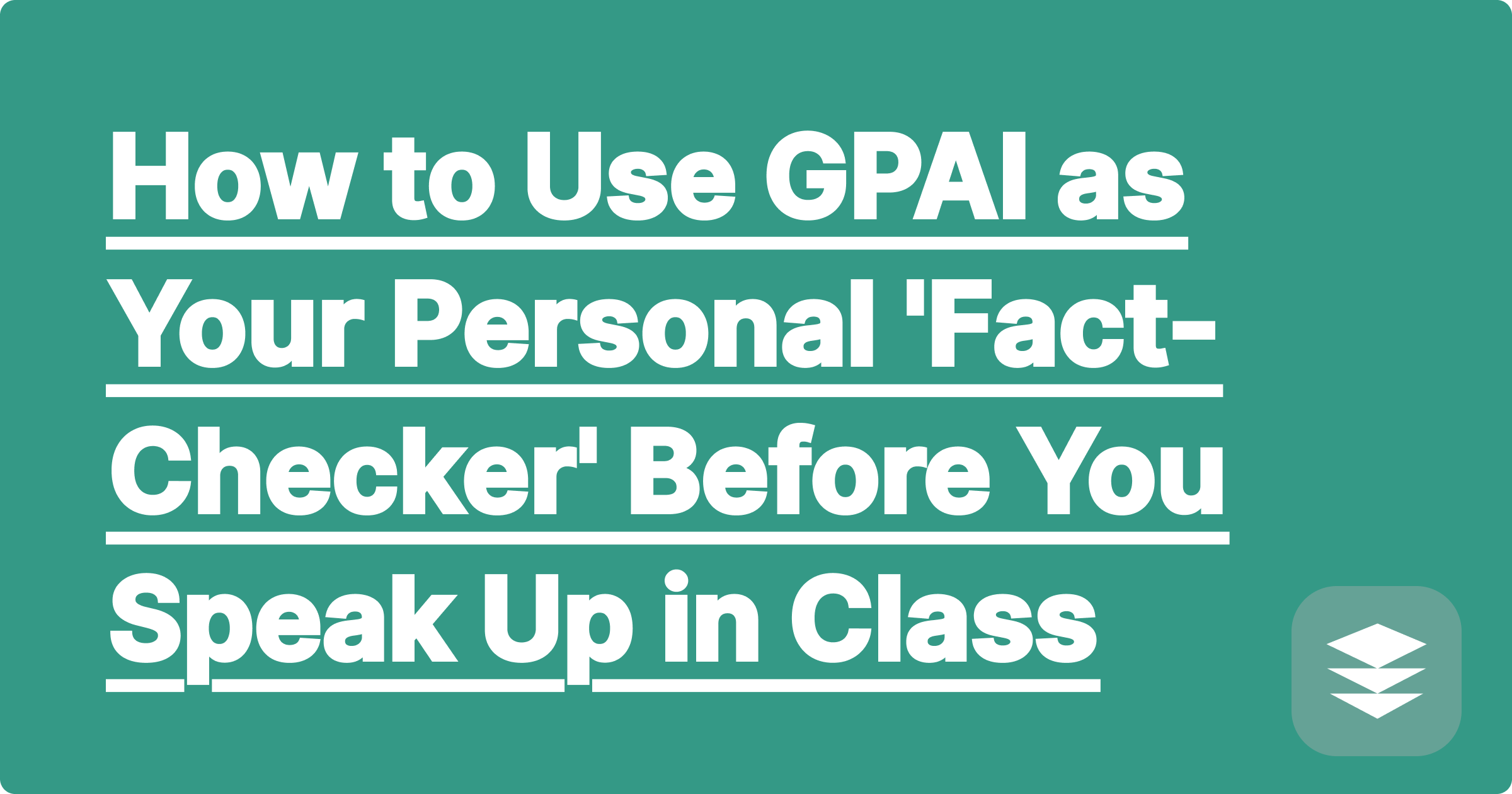
It's a familiar moment of classroom anxiety. The professor asks a thought-provoking question, and you have an idea—a really good idea. But just as you're about to raise your hand, a wave of doubt washes over you. "Am I remembering that statistic correctly? Is that historical date right? What if my argument has a logical flaw?" This fear of "sounding stupid" is one of the biggest reasons smart students stay silent in class. To speak with confidence, you need to trust your information. You need a fast, reliable, personal ai fact checking tool.
Knowing how to speak confidently in class isn't about being the smartest person in the room; it's about being the best prepared. Confidence comes from a quiet certainty that your claims are backed by evidence. In the past, achieving this certainty required hours of pre-class research and fact-checking. Today, an AI assistant like GPAI Solver can do it for you in seconds.
Think of this as a 30-second ritual you perform before raising your hand.
You have an idea you want to contribute to the discussion. Before you say it out loud, you articulate it silently to yourself or as a quick note. For example: "I think the rapid industrialization in the 19th century was primarily driven by the invention of the steam engine, which led to a massive increase in factory production."
Now, you use your personal solver for a rapid-fire check.
[Image: A student in a lecture hall looking thoughtful, with their hand slightly raised. On their laptop screen, a GPAI Solver chat is shown with a quick fact-check query and the AI's instant response. Alt-text: A student using an AI fact-checking tool to gain confidence before speaking in class.]
Armed with the AI's instant verification, you can now raise your hand and make your point with precision and confidence. You can say, "Building on that point, it's interesting to note that the efficiency gains from Watt's 1776 patent were a key catalyst. We saw textile production increase by over 500% in the following 50 years, which strongly supports the argument that the steam engine was a primary driver, although we should also consider factors like..." You sound like a scholar.
This habit of fact-checking your own assertions before you make them is a critical life skill. You can use your AI solver, cheatsheet, and note taker to:
When you consistently make contributions that are thoughtful, well-supported, and factually accurate, you build a powerful personal brand. Your professors and peers will come to see you as someone who is not just smart, but reliable. Your AI assistant, used discreetly and effectively, is your secret partner in building this reputation.
A: For a fast-moving discussion, it can be challenging. But it's perfect for when a professor asks a question and then gives the class a minute to think. It's also an incredibly powerful tool for preparing for a class you know will be discussion-heavy, or for online forum discussions where you have more time to compose your thoughts.
A: Speed and synthesis. Googling requires you to open a new tab, type a query, scan through multiple results, and judge their reliability. An AI assistant designed for academic queries can often provide a more direct, synthesized answer from trusted sources in a fraction of the time.
Don't let the fear of being wrong keep your brilliant ideas locked in your head. By using an AI as your personal, real-time fact-checker, you can gain the confidence to participate actively, contribute meaningfully, and become a respected voice in any academic discussion.
[Start speaking with confidence. Use the GPAI Solver as your personal fact-checker. Sign up for 100 free credits.]
How to Use GPAI as Your Personal 'Fact-Checker' Before You Speak Up in Class
The 'Rubber Duck Debugging' Method, with an AI That Actually Talks Back
I Have a Terrible Memory': Using an AI Notetaker as a Prosthetic Memory
The Art of the Nap: How AI Can Help You Study in Short, Intense Bursts
What Your Choice of AI Tool Says About Your Personality
How to Build a 'Career Moat' Using Your AI-Generated Knowledge Base
Surviving a Professor Known for 'Trick Questions' with an AI Test Generator
Is This Concept on the Exam? Using AI to Analyze Past Tests
The Ultimate 'Pre-Lecture' Ritual: How to Prime Your Brain in 5 Minutes
Did I Plagiarize Myself?': Using an AI to Rephrase Your Own Previous Work